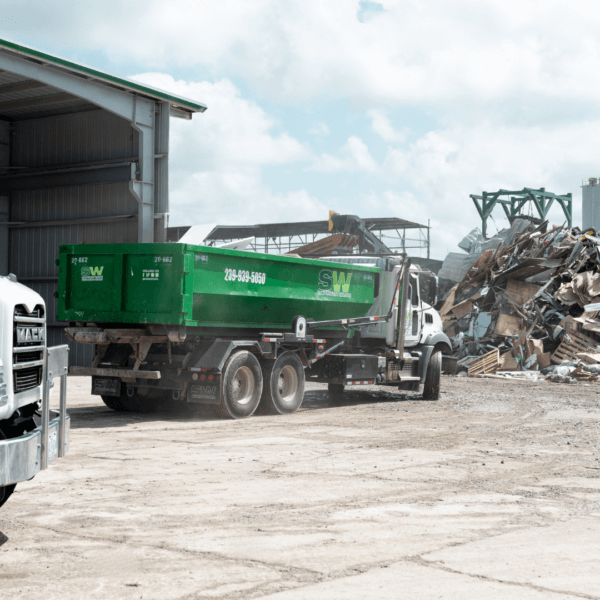
PairSoft
The strongest AP automation, document management, procurement, and fundraising automation platform for mid-market and enterprise companies with integrations to your ERP system.
View all posts by PairSoftPairSoft • April 21, 2022

As we move closer — however slowly — toward a post-pandemic world, global supply chains have a markedly dire need to build resilience in order to succeed. In fact, according to The Hacket’s Group’s 2021 Procurement Key Issues Study, 10 key priorities among procurement professionals bubbled up after what can only be described as a volatile year.
From reducing spend costs and improving procurement agility to acting as a strategic advisor to businesses and aligning skills and talent with changing business needs, these focus areas showcase a critical need for procurement to provide much-needed stability. Of particular note is that one new issue made its first appearance on this list: Enabling corporate sustainability goals.
In the face of environmental degradation — and the ever present need for ethical processes — sustainable procurement practices are a win-win. Every purchasing decision that an organization makes can have a profound impact on three important entities: the environment, economy, and society, if only a business considers the proper criteria during the decision-making process.
ESG offers a framework for businesses to assess the impact of sustainability on how they operate their company. A scoring system compiles data collected from specific metrics related to these intangible factors. Strong ESG propositions can drive high value creation for companies and their shareholders — with an impact that goes beyond monetary figures. Some might even say that as a risk management tool, ESG has become the new measurement for success among organizations around the world.
According to Dun & Bradstreet, “ESG encapsulates almost everything that may reflect how companies are operating within society and the environment, and if that mode of operation is ‘sustainable’ and ‘responsible.’” As these criteria become increasingly more integrated into corporate strategy around procurement practices, it’s important to distinguish the different categories:
When a business implements sustainable procurement practices, it considers the economic, environmental, and social impacts defined above along with the price and quality of potential goods and services. The process helps achieve value for more than just the business, thus serving the broader community. Adopting sustainable procurement practices also helps an organization express its commitment to driving positive outcomes such as lowering greenhouse gas emissions and improving air and water quality.
“Sustainability is based on a simple principle: Everything that we need for our survival and well-being depends, either directly or indirectly, on our natural environment. To pursue sustainability is to create and maintain the conditions under which humans and nature can exist in productive harmony to support present and future generations.”
Source: EPA
As procurement leaders continue to boldly take a green approach to business practices, they are making a decisive difference in supporting sustainability efforts. In fact, the World Procurement Congress 2021 took place just last week, bringing speakers and audience members alike together to discuss the challenges around sustainability, diversity and inclusion, and digitalization — in the context of procurement-related opportunities.
According to WPC speakers such as Angela Qu, Chief Procurement Officer at Lufthansa, and Stuart Caborn, CPO at Nomad Foods, sustainability is firmly positioned at the top of procurement leaders’ list of priorities — and they agree there is no time to waste to take action.
As companies have made eco-friendly declarations and goals in recent years, it has become a board-level responsibility to ensure sustainable procurement policy enables companies to actually deliver. Procurement is uniquely positioned to liaise between all levels of an organization and its external partners, thus giving it the power to make all the difference in reaching sustainable development goals.
In reviewing the key takeaways of the WCO, we wanted to look into the inspiring procurement leaders who are contributing to this pioneering change, and how their strong ESG credentials are impacting the current state of corporate social responsibility around the world.
As a procurement leader at Bayer and Co-Founder of the Sustainable Procurement Pledge, Udeson believes that a long-term, unwavering commitment to prioritizing sustainability is vital to effectively making a veritable difference. He believes that embedding sustainability into procurement practices is not only a smart business move, but a responsibility on the part of procurement professionals.
Based in France, this multinational cosmetic store is part of the Responsible Beauty Initiative, a cosmetic initiative focused on sustainable products and supply chains. It provides comprehensive sustainable scorecards for its members to track, monitor, and benchmark environmental, social, and ethical performance in 200 purchasing categories and 160 countries
With more than 20+ years of experience as a procurement professional, Harris leads sustainability and sourcing at Eastman Chemical, a global specialty materials company. She has spearheaded an initiative at Eastman that improves accountability across the organization by hosting “huddles” or small discussions to check in on how they are performing against their sustainability goals.
Even though 58% of supply chain companies believe that sustainable procurement practices can help them mitigate risk, many remain hesitant to implement these green processes due to the potential of high costs and a lack of resources, according to the U.S. Supply Chain Management Council. While it can be difficult to know where to start in making your procurement practices more sustainable, there are some key strategies that can help your organization successfully develop and roll out new practices.
In order to improve supply chain transparency and accountability, take a keen look at the hidden risks and areas of improvement and then plan to prioritize and address them. Taking the time to place your suppliers in one of three categories — low-, medium-, or high-risk — can go a long way in preventing unforeseen disruptions. It’s important to recognize the biggest risks in your supply chain so you can resolve them by modifying your go-to sources or start collecting mission-critical supplies.
Properly vet potential suppliers for ESG criteria such as environmental pollution, labor disputes, workforce health and safety protocols, and corruption and bribery. It’s also important to vet new partners to ensure their supply chain can sustain a critical disruption such as a factory shutdown or shortages of raw materials and natural resources in certain geographic locations.
Expand your stakeholder partnerships to include a diverse vendor base, including onshore, offshore, and nearshore businesses. Break down barriers and unlock the potential for new procurement innovations, solutions, and collaborations by working with new suppliers. By including new vendors in your purchasing process, your company can support any number of sustainable procurement goals.
Reducing paper usage will help minimize your business’s carbon footprint while speeding up your operations. Using an electronic procurement system like PairSoft delivers top-rate solutions in automated procurement, AP automation, and document management. Implement e-invoicing, electronic purchase orders, and paper checks to optimize the efficiency of these financial transactions.
The key to capable sustainable procurement practices is embracing the eco-friendliness of new technologies. These advances have changed the game for procurement leaders in the name of efficiency, transparency, accountability, and sustainability. From automation and new processing technologies to continuous-flow manufacturing and additive manufacturing, these new technologies help build resilience, mitigate disruption risk, and achieve a competitive edge.
Even pre-pandemic conditions accelerated the need for businesses to adopt forward-thinking procurement practices to promote efficiency, productivity, and sustainability. More than ever, supply chain vulnerabilities need to be examined and addressed to reduce risk and empower long-term endurance.
Sustainable procurement practices enable profound business growth and a socially-responsible impact on our society at large. An automated procurement platform like PairSoft can help support your ESG goals while boosting your bottom line. Embed sustainability into your automation practices to showcase your dedication to contributing to a greener present — and future.
Get in touch with our team to schedule a free demo to find out how PairSoft can help you activate sustainable procurement practices today.
